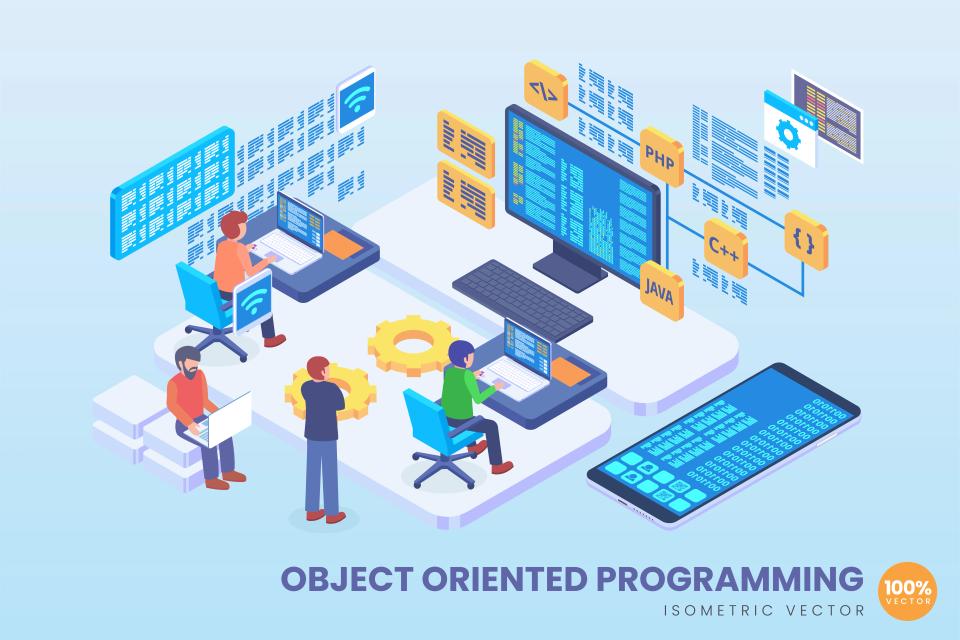Tired of empty waiting rooms? Wondering where your next patient will come from? The truth is, the world of patient acquisition has undergone a seismic shift. Gone are the days of relying solely on referrals or local newspaper ads. Today, your potential patients are online, actively searching for solutions to their health concerns. Astonishingly, Google processes over 1 billion health-related searches every single day. That's a flood of individuals seeking answers, relief, and, most importantly, healthcare providers like you.
But let's be frank. Navigating the digital landscape as a healthcare provider is like walking a tightrope. You face unique challenges: building unwavering trust with vulnerable individuals, adhering to stringent regulations like HIPAA, and standing out in an increasingly crowded online space. It’s enough to make anyone feel overwhelmed. Yet, within this challenge lies an incredible opportunity.
Imagine a direct line to individuals actively seeking your specific medical services, right when they need them most. That's the power of Google Ads. This isn't about casting a wide, hopeful net; it's about precision, connection, and measurable results. This post will be your guide, illuminating the path to crafting effective, compliant, and deeply patient-engaging Google Ads campaigns, helping you turn those online searches into meaningful patient relationships. At CaptivateClick, we understand that strategic marketing is key to unlocking this potential.
Why Google Ads is Essential for Healthcare Providers
Why should Google Ads be a cornerstone of your patient acquisition strategy? Simple. It puts you directly in front of patients at their precise moment of need. When someone searches for “emergency dental care city” or “best cardiologist for heart palpitations”, they’re not just browsing; they’re actively seeking help. Google Ads captures these high-intent patients searching for specific services, ensuring your practice is visible when it matters most.
Think local, act local. Google Ads allows for powerful hyper-local targeting, enabling your clinic to connect with patients within your specific service area, whether by ZIP code, city, or a defined radius around your practice. This means your marketing budget isn't wasted on clicks from outside your patient catchment area. You're reaching the people who can actually walk through your doors.
Furthermore, the beauty of medical PPC advertising lies in its measurability. You can track every click, every call, every appointment inquiry generated from your ads. This allows for real-time performance tracking and ROI calculation, so you know exactly what’s working and how much each new patient acquisition costs. This data-driven approach empowers you to continuously refine your campaigns for optimal results, building not just visibility but also tangible growth and trust in a competitive market. Indeed, Google Ads can deliver instant visibility compared to organic SEO efforts, which often take months to yield similar results.
Navigating the Labyrinth: Compliance in Healthcare Advertising (HIPAA & Google Policies)
Stepping into healthcare advertising without understanding compliance is like navigating a minefield blindfolded. The stakes are incredibly high, involving patient privacy, hefty fines, and your practice's reputation. It’s a complex area, but absolutely critical for success with Google Ads for healthcare.
The Non-Negotiable: HIPAA Compliance
First and foremost is the Health Insurance Portability and Accountability Act (HIPAA). This is non-negotiable. A crucial point to understand is that Google Ads will not sign HIPAA Business Associate Agreements (BAAs). This means you absolutely cannot use Protected Health Information (PHI) in your ads, targeting, or remarketing efforts. Forget about targeting based on specific sensitive conditions or using patient lists for remarketing; it's a direct path to severe penalties.
So, what can you do? Focus your ads on the services you offer, general health information, and your practice's unique selling propositions (USPs) – like your experienced team or state-of-the-art technology. For instance, while you can't target users searching for "HIV treatment," you can promote general wellness check-ups or your clinic's convenient location. Always ensure your landing pages are secure, and any data collected through forms is handled with the utmost care, redacting PHI from URLs and form fields to safeguard privacy. Geofencing around competitors’ locations can be permissible if ads avoid referencing specific conditions or treatments.
Google's Healthcare & Medicines Policy
Beyond HIPAA, Google itself has stringent policies for healthcare and medicines. Google restricts advertising for certain prescription drugs, addiction treatment services (unless certified), and unproven or speculative medical treatments. Advertisers often need to undergo a verification process to prove they are legitimate healthcare providers, ensuring a safer search experience for users.
Failure to comply with these policies can lead to ad disapprovals, or worse, account suspension. This isn't just about avoiding penalties; it's about building trust with potential patients by demonstrating ethical and responsible marketing practices. Understanding these healthcare ad strategies compliance rules is paramount.
CaptivateClick's Stance
The complexities of HIPAA and Google's advertising policies are precisely why many healthcare providers choose to partner with an agency that specializes in this field. At CaptivateClick, we don't just build ad campaigns; we build compliant, effective patient acquisition funnels. We understand the nuances, stay updated on policy changes, and prioritize your practice's integrity alongside its growth.
Laying the Foundation: Strategic Campaign Setup
Want your Google Ads to actually bring in patients? It all starts with a rock-solid foundation. Skipping this crucial strategic setup phase is like building a house on sand – it’s bound to crumble.
Defining Clear Objectives
First, what do you really want to achieve? This might seem obvious, but vague goals lead to vague results. Are you aiming for more appointment bookings for a specific high-value service? Do you want to increase phone calls to your front desk? Or perhaps you're looking to drive inquiries for a new telehealth offering? Clearly defined objectives will dictate your entire campaign structure, keyword selection, and ad messaging. Without them, you're just throwing money at the wall.
In-Depth Keyword Research for Healthcare
Keywords are the lifeblood of your Google Ads campaigns. You need to get inside the minds of your potential patients. What terms are they typing into Google when they're worried, in pain, or seeking preventative care? Think patient-intent keywords like “pediatrician near me,” “emergency dental care [city],” or “best cardiologist for atrial fibrillation.” Keyword research tools can identify high-intent terms such as “same-day doctor appointment.”
Don't just stop at broad terms. Dive into long-tail keywords – longer, more specific phrases like “weekend sports physicals for teenagers in [your neighborhood]”. These often have lower competition and attract highly qualified leads. And critically, don't forget negative keywords. These are terms you don't want your ads to show for, such as “jobs,” “reviews” (if you're not focused on reputation management ads), or competitor names (unless it's a deliberate strategy). With 70,000 health-related searches occurring every minute on Google, precise keyword targeting is essential to capture the right audience.
Structuring Campaigns & Ad Groups for Relevance
Once you have your keywords, organization is key. Don't just dump all your keywords into one ad group. Structure your campaigns and ad groups logically to ensure maximum relevance. A common and effective approach is to structure by service line (e.g., cardiology, dermatology, general practice). You might also structure by condition (where appropriate and compliant) or by location if you have multiple clinics.
The golden rule here is tight keyword-to-ad-to-landing page relevance. If someone searches for "children's flu shots," they should see an ad about children's flu shots, which then clicks through to a landing page specifically about your pediatric flu vaccination services. This alignment not only improves user experience but also significantly boosts your Quality Score, which can lower your ad costs. Segmenting campaigns by service line improves ad relevance and Quality Scores, leading to better performance.
Crafting Compelling & Compliant Ad Copy
Your ad copy is your digital handshake, your first impression. In the sensitive world of healthcare, it needs to be more than just informative; it must be empathetic, trustworthy, and compelling, all while staying strictly within compliance boundaries. This is where art meets science in healthcare digital marketing.
Speak your patient's language. Focus on the benefits they seek – relief from pain, peace of mind, a path to better health. Use clear, concise, and empathetic language that resonates more than technical jargon. Instead of "Advanced Orthopedic Interventions," try "Find Relief from Joint Pain Today." Addressing patient pain points directly, for example with a headline like “Struggling with Back Pain?”, can significantly increase emotional engagement and ad relevance.
Your ads must have clear and strong Calls-to-Action (CTAs). Tell people exactly what you want them to do next. Don't be shy! Use action-oriented phrases like:
Book an Appointment OnlineCall Us Today for a ConsultationFind a Doctor Near YouLearn More About Our Cardiac Care
Highlighting convenience factors such as “Same-Day Appointments” or “Online Booking Available” in your CTAs can reduce friction and encourage immediate action.
What makes your practice special? Is it your board-certified specialists, your cutting-edge diagnostic technology, your compassionate patient care philosophy, or your convenient evening hours? Weave these Unique Selling Propositions (USPs) into your ad copy. Ad extensions are your secret weapon here. Use Sitelink Extensions to direct users to specific service pages (“Diabetes Care,” “Physical Therapy”), Call Extensions for easy click-to-call functionality, and Location Extensions to help patients find you. Callout Extensions can highlight key benefits like “Board-Certified Doctors” or “Accepting New Patients,” while Structured Snippets can list services like “Services: Check-ups, Vaccinations, Physicals.” These extensions provide valuable information at a glance and can significantly improve your ad's click-through rate.
Precision Targeting: Reaching the Right Patients (Ethically)
Broadcasting your message to everyone is a surefire way to waste your medical PPC advertising budget. The power of Google Ads lies in its ability to target with incredible precision, ensuring your ads are seen by the right patients, in the right place, at the right time – all while upholding the highest ethical standards.
Geo-targeting is fundamental. Define your service areas with pinpoint accuracy. Are you serving a specific city, a set of ZIP codes, or a radius around your clinic? Radius targeting, for example, a 10-mile radius around a clinic, prioritizes local patients effectively. This ensures you're reaching individuals who can realistically access your services. Given that 46% of "near me" health searches are looking for local options, robust geo-targeting is non-negotiable.
Demographic targeting (age, gender) can be useful but must be approached with extreme caution in healthcare to remain compliant. For instance, targeting specific age groups for pediatric services or women for obstetric care can be relevant. However, never use demographics to imply knowledge of sensitive health conditions. Device targeting is also crucial; with a significant portion of health searches happening on mobile devices – around 70% according to Digital Silk – your ads and landing pages must be optimized for a seamless mobile experience.
Remarketing, or showing ads to people who have previously visited your website, can be highly effective but requires extreme caution and strict compliance in healthcare. You can remarket to general site visitors or those who engaged with non-sensitive content (e.g., your "About Us" page or a general health blog post). However, you must absolutely avoid remarketing based on visits to pages about specific conditions, treatments, or symptoms, as this could imply knowledge of PHI and violate HIPAA. Retargeting campaigns must exclude sensitive data like medical conditions to prevent PHI disclosure. This is an area where expert handling is not just recommended, it's essential.
Optimizing Your Budget & Bidding Strategies
So, you’ve got your campaigns structured, your keywords researched, and your ad copy polished. Now, let's talk money. How much should you spend, and how can you make every dollar count? Optimizing your budget and choosing the right bidding strategies are crucial for maximizing your return on investment from Google Ads for healthcare.
First, set a realistic budget. Understand that patient acquisition ads are an investment, and like any investment, they require adequate funding to generate meaningful results. Consider your patient lifetime value and your desired cost-per-acquisition. It’s better to start with a focused, well-funded campaign for a key service line than to spread a tiny budget too thin across multiple initiatives.
Google Ads offers various bidding strategies, each suited to different goals. If you have solid conversion tracking in place and historical data, Target CPA (Cost Per Acquisition) bidding can automate bids to acquire patients at a predefined cost. For newer campaigns focused on generating lead volume, Maximize Conversions might be a good starting point. Manual CPC bidding offers the most granular control but requires more hands-on management. The key is to choose a strategy aligned with your objectives and to monitor its performance closely.
Don't forget the mighty Quality Score! This Google metric (on a scale of 1-10) assesses the relevance of your keywords, ad copy, and landing page experience. A higher Quality Score not only improves your ad ranking but can also significantly lower your cost-per-click (CPC). Consistently working to improve ad relevance and landing page quality is a direct path to better budget efficiency. CaptivateClick excels in A/B testing and performance tracking, continuously refining campaigns to squeeze the most value from your ad spend, much like the A/B testing that helps identify high-performing elements and reduce cost per acquisition.
The Crucial Role of High-Converting Landing Pages
You can have the most brilliant ad copy and the most precise targeting, but if your ads send potential patients to a confusing, slow, or untrustworthy landing page, you’re throwing your money away. Your landing page is where the conversion happens – where a curious click transforms into a valuable patient inquiry. For Google Ads for healthcare, a high-converting landing page isn't just important; it's absolutely crucial.
Stop sending ad traffic to your generic homepage! Each ad group, or even each ad, should ideally lead to a dedicated landing page specifically designed for that audience and offer. This ensures message match and a seamless user experience. If your ad promises "Same-Day Appointments for Flu Shots," the landing page should prominently feature information and a booking option for exactly that. Clear headlines that align with ad copy maintain message consistency and reduce bounce rates.
What makes a great healthcare landing page? It starts with a clear, benefit-driven headline that echoes your ad copy. The content should be concise, focusing on how you solve the patient's problem or meet their need. Crucially, it must feature prominent trust signals: think HIPAA compliance badges (if applicable and accurately represented), physician credentials, patient testimonials (with explicit consent), and any relevant certifications or awards. And, of course, it must be mobile-responsive and load quickly, ideally in under 3 seconds, to cater to on-the-go searchers.
Make it incredibly easy for patients to take the next step. Your contact information – phone number, address, and a map – should be easy to find. If you use forms for appointment requests or inquiries, keep them simple and secure. Only ask for essential information, and ensure your forms and data handling are HIPAA-compliant. For more insights on creating pages that convert, explore our strategies for effective conversion optimization in design and content.
Measuring Success: Key Performance Indicators (KPIs) for Healthcare Ads
How do you know if your Google Ads for healthcare are actually working? You can't manage what you don't measure. Tracking the right Key Performance Indicators (KPIs) is essential to understand campaign performance, identify areas for improvement, and demonstrate a tangible return on your investment.
Start with the basics: Impressions (how many times your ad was shown) and Clicks, which together give you your Click-Through Rate (CTR). While a high CTR indicates your ad is resonating with searchers, it's only part of the story. The real magic happens post-click. You need to track conversions – the specific actions you want patients to take. For healthcare providers, common conversions include appointment requests (via form submissions), phone calls (using Google's call tracking or third-party solutions to attribute calls to specific ads), and even requests for driving directions to your clinic.
Once you're tracking conversions, you can calculate your Conversion Rate – the percentage of clicks that result in a desired action. This is a critical metric for gauging the effectiveness of your ads and landing pages. A conversion rate above 5% generally indicates strong ad-to-landing page alignment in many healthcare niches. Perhaps the most important KPI for many practices is the Cost Per Conversion or Cost Per Acquisition (CPA) – how much you're paying, on average, for each new patient inquiry or booking. For primary care, a CPA under $50 is often achievable with well-optimized campaigns.
Don't just set and forget. Regularly monitor these KPIs. Analyze trends, identify what's working well (and do more of it), and pinpoint underperforming areas for optimization. Effective patient acquisition ads require ongoing analysis and iteration to continuously improve results and ensure your marketing dollars are working as hard as possible for your practice.
Conclusion: Partnering for Patient Engagement & Growth
The journey to acquiring new patients has fundamentally changed. Today, your prospective patients are online, actively searching for care, and Google Ads offers a powerful, direct channel to connect with them. We've explored how to lay a strategic foundation, craft compelling and compliant ad copy, target with precision, optimize your budget, and ensure your landing pages convert clicks into valuable inquiries. From understanding the critical importance of HIPAA and Google policy compliance to leveraging patient-intent keywords and effective ad extensions, the path to successful Google Ads for healthcare is multifaceted.
But let's be clear: navigating the complexities of healthcare advertising, especially with its stringent regulations and the need for deep empathy in messaging, requires specialized knowledge and experience. Achieving consistent, measurable results while maintaining full compliance isn't a part-time job; it's a dedicated discipline. This is where partnering with an agency that lives and breathes this world can make all the difference. CaptivateClick brings this specialized expertise, demonstrated through our work in various regulated sectors, such as our approach to boosting ROI with Google Ads for Financial Services and Banks.
Ready to stop guessing and start strategically attracting more patients? Are you prepared to enhance patient engagement and drive sustainable growth for your practice with expertly managed Google Ads campaigns? Don't let the digital shift leave you behind. Contact CaptivateClick today for a free consultation on your healthcare advertising strategy. Let us help you connect with the patients who need you most.













